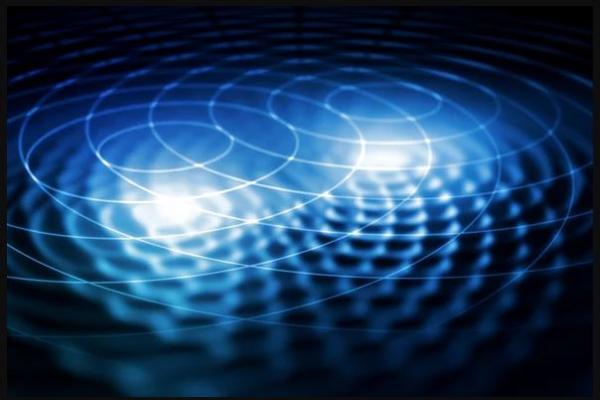Scientists See Quantum Interference between Different Kinds of Particles for First Time

For the first time, scientists have observed quantum interference—a wavelike interaction between particles related to the weird quantum phenomenon of entanglement—occurring between two different kinds of particles. The discovery could help physicists understand what goes on inside an atomic nucleus.
Particles act as both particles and waves. And interference is the ability of one particle’s wavelike action to diminish or amplify the action of other quantum particles, like two boat wakes crossing in a lake. Sometimes the overlapping waves add up to a bigger wave, and sometimes they cancel out, erasing the wave. This interference occurs because of entanglement, one of the weirder aspects of quantum physics, which was predicted in the 1930s and has been experimentally observed since the 1970s. When entangled, the quantum states of multiple particles are linked so that measurements of one will correlate with measurements of the others, even if one is on Jupiter and another is on your front lawn.
Dissimilar particles can sometimes become entangled, but until now, these mismatched entangled particles weren’t known to interfere with one another. That’s because part of measuring interference relies on two wavelike particles being indistinguishable from each other. Imagine two photons, or particles of light, from two separate sources. If you were to detect these photons, there would be no way to determine which source each came from because there is no way to tell which photon is which. Thanks to the quantum laws governing these very small particles, this ambiguity is actually measurable: all the possible histories of the two identical photons interfere with one another, creating new patterns in particles’ final wavelike actions.
These patterns don’t typically happen with a pair of dissimilar particles, though, even when they’re entangled. Because it’s possible to tell these particles apart, there’s no mystery about their histories and thus no interference between these different worlds of possibilities—that is, until now.
In a first, physicists have now found interference between two dissimilar subatomic particles. Researchers made the observation at the Relativistic Heavy Ion Collider (RHIC), a colossal particle accelerator at Long Island’s Brookhaven National Laboratory. The finding broadens the way we understand entanglement and offers new opportunities to use it to study the subatomic world.
“With this new technique, we are able to measure the size and shape of the nucleus to about a tenth of a femtometer, a tenth of the size of an individual proton,” says James Daniel Brandenburg, a physicist at the Ohio State University and a member of RHIC’s STAR experiment, where the new phenomenon was seen. That’s 10 to 100 times more precise than previous measurements of high-energy atomic nuclei.
Story By Stephanie Pappas
Photo Credit: Petrovich9/Getty Images
